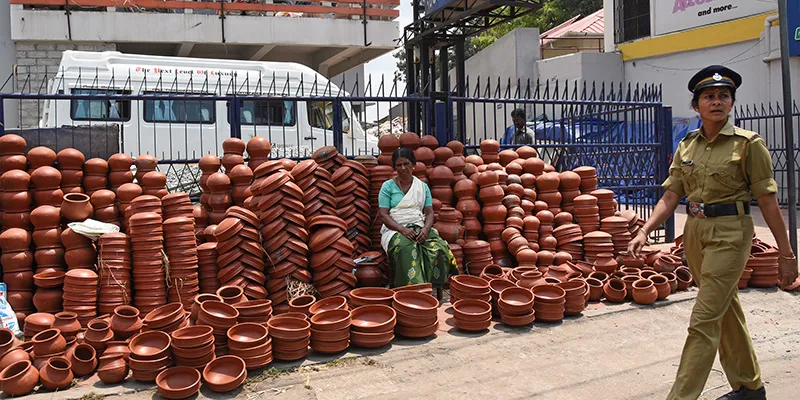Women cops are satisfied with work but not with the male-dominated setup
Our women contingent is the first to be deployed in a UN peacekeeping force but they have to battle a male-dominated structure back home
Despite the changing ethos and increased interest among women to engage in police organisations, their composition has not gone beyond a mere six percent nationally. It is believed that the presence of women in the police force will encourage women victims of crime to approach police stations without any inhibitions. Women police personnel can also better handle women and juveniles, both as victims and as perpetrators. Another belief says that presence of women can sensitise the very police force on gender concerns.

Image: shutterstock
However, despite repeated recommendations that women should constitute at least a third of the civil police up to the level of sub-inspectors, they accounted only for 5.6 percent of the force’s strength in 2011.This was a mere 4.6 percentage points increase since 1991. In 2013, the proportion rose slightly to 5.87 percent.
The Ministry of Home Affairs had issued detailed advisories in 2009 and 2013 asking all States and Union Territories to increase women representation in police force to 33 percent. The 43rd All India Police Science Congress held in 2013 also resolved for deputation of four women personnel in each police station but State governments are yet to act on these advisories. In 2015, the Union Cabinet cleared 33 percent quota for women in police forces of all UTs, including Delhi, which currently has only eight percent women in total force.
There are only 499 women police stations in India, out of a total of 15,000 police stations. The Union Ministry of Home Affairs is also proposing to appoint women in six lakh villages across the country as Special Police Officers (SPOs) on a voluntary basis. SPOs are ordinary citizens appointed by the State police to help them in community policing, and are mostly given non-combative assignments.
While there is consistent emphasis to bring more women into the force, a critical introspection is needed on prevailing work conditions, which can themselves act as obstacles. A Lok Sabha Committee on Working Condition of Women in Police Force found that lack of basic amenities like toilets and restrooms remain a concern. Residential accommodation is another big promise that has been left unfulfilled as only 30 percent police personnel have been given accommodation and many police stations are still run on rented buildings.

Image: shutterstock
In all the States/UTs, the lower subordinates were always less satisfied than the upper subordinates. While all the upper subordinates felt satisfied with the family accommodation in Chandigarh, only 10.71 percent in Manipur expressed satisfaction with theirs. Among the lower subordinates, only 4.4 percent felt satisfied in Manipur, while 80 percent felt satisfied in Dadra & Nagar Haveli.
While 86 percent police women felt satisfied with their work, most of the senior police women felt that they were denied important assignments and postings because of their gender. Consequently, police women’s professionalism goes unnoticed, with very little opportunities to display their capabilities on par with policemen.
Around 45 percent of the respondents admitted difficulty in managing work and personal life. Unanimously, all were of the opinion that a crèche/daycare facility for their children near the place of work is inevitable. Gross underutilisation of funds allocated for establishing childcare facilities is a cause for concern.
Stress at work is a very deleterious factor that has invariably affected police women too. The number of police suicides is on the rise but there is no study on the causes. Particularly, women in the Central Armed Police Forces constitute only two percent of the total strength, but they make up for 40 percent of the suicides reported from these forces.

Image: shutterstock
Alongside stress, rigid transfer/posting policy is another serious impediment to retaining women in the police force. Posting spouses in the same station have been implemented by many police organisations. However, functional challenges have not allowed these to culminate into a policy at the national level.
Indian police women are at a crucial juncture. While our women contingent is the first to be deployed in a UN peacekeeping force, they also have to battle a male-dominated structure back home. The intention to create a conducive working environment for police women cannot be achieved until the force is gender-sensitised. Recurrent demands for separate toilets for police women can tell us how gender sensitive the force has been so far.
Answers have started coming in. Demands for basic amenities, gender-sensitive measures like childcare centres and mobile toilets, adequate welfare measures to help them achieve a healthy work-life balance are being addressed gradually. One hopes that these are not off-hand measures to reach the 33-percent mark, but are well integrated with a vision to promote equal opportunities for women in the police force too.
Disclaimer: This article, authored by Shanmuga Priya T, was first published on GOI Monitor.







